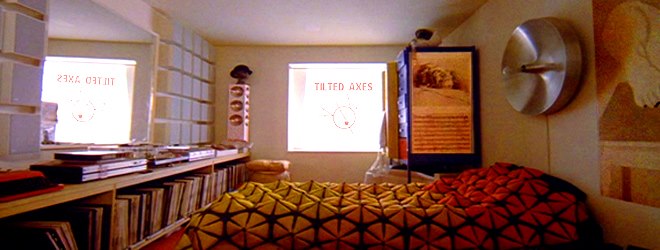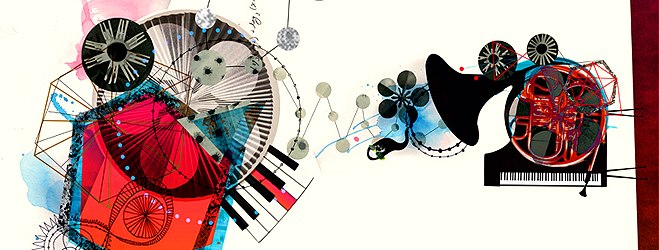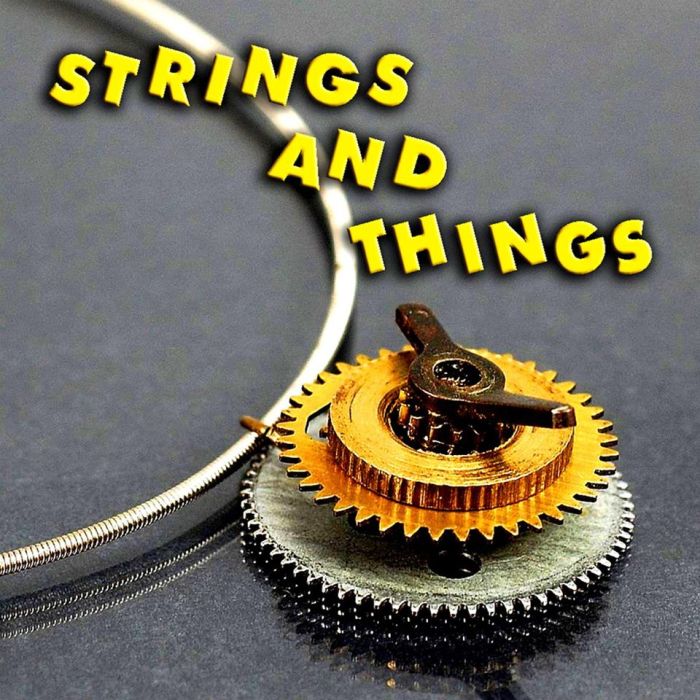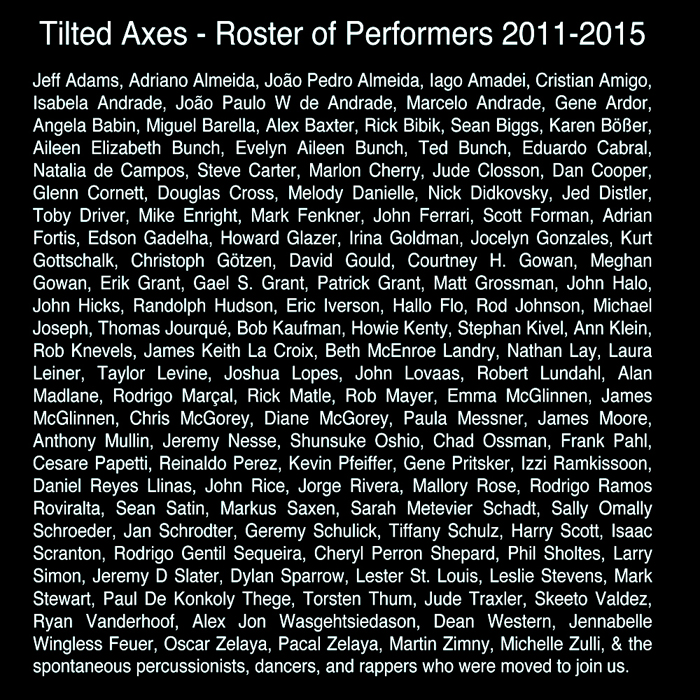
Patrick Grant is an American composer living and working in New York City. His works are a synthesis of classical, popular, and world musical styles that have found place in concert halls, film, theater, dance, and visual media over three continents. Over the last three decades, his music has moved from post-punk and classically bent post-minimal styles, through Balinese-inspired gamelan and microtonality, to ambient, electronic soundscapes involving many layers of acoustic and electronically amplified instruments. Throughout its evolution, his music has consistently contained a “…a driving and rather harsh energy redolent of rock, as well as a clean sense of melodicism…intricate cross-rhythms rarely let up…” Known as a producer and co-producer of live musical events, he has presented many concerts of his own and other composers, including a 2013 Guinness World Record-breaking performance of 175 electronic keyboards in NYC. He is the creator of International Strange Music Day (August 24) and the pioneer of the electric guitar procession Tilted Axes.

1. What were the first and the last records that you bought with your own money?
When I was 11 years old, I saw a commercial on television for Stanley Kubrick’s “A Clockwork Orange.” The music in that commercial grab my ears right away. I could not figure out what was making those sounds. It was winter so I shoveled snow to earn the money to buy the LP. When I brought it come I put it on my record player and dropped the needle from track to track to find the music I had heard. It was the March section in 6/8 of the choral movement of Beethoven’s Ninth Symphony as performed on the Moog synthesizer by Wendy (then Walter) Carlos. It blew my mind because up until then, to me, classical music was only stuff that was used in a humorous way in cartoons. The sounds of the Moog entirely captivated me. In one moment I was transformed and dedicated my life to music and, in many ways, my personal pursuit to this day is to relive that feeling I had. Now, the last album I actually purchased, on CD, was “King Crimson Live in Toronto, November 20, 2015.” If you also count digital purchases, that would be Frank Ocean’s “Blonde.” Whether you like his music or not, there is a lot to be learned about recording techniques on that album.

2. What’s your musical practice routine ?
I begin every day with the Sitting Practice I have learned from being a part of Robert Fripp’s projects. It wouldn’t be right to call it meditation. The idea is, “How can one do anything if one doesn’t know how to do nothing?” So that’s it, I begin my day by doing nothing, as excellently as possible. The goal is to calm our Monkey Minds (reflex) and replace it with clear aims (intention). From there, I’ll go through a number of exercises on my acoustic Ovation tuned in Guitar Craft’s New Standard Tuning (C – G – D – A – E – G). I go through a number of finger exercises called Primaries. I find that this guitar’s tuning, in 5ths, really stretches out my left hand. Being acoustic, the right hand, playing with a pick, is given an equal amount of attention. There’s no hiding a sloppy right hand technique on an acoustic. If done well, the result is having exercised one’s ability to put attention where it’s needed, when it’s needed, not just in the hands, but throughout one’s being. All of this warms me up and gets me ready for whatever musical tasks I have for the day. If it’s a “keyboard day,” I’ll do all of the same preparation but will run through some of Bach’s Two-Part Inventions. I love the purity of the two monophonic lines working every finger equally.

3. In your opinion, what’s the relevance of technique in music?
If one wants to make a life out of music, the learning of technique never ends. Not just in playing one’s instrument but, in all of the related fields that makes music possible. Understanding musical instrument technology and its constant evolution is one area. Then there are the various techniques of arranging, recording, and producing. So yes, it’s incredibly relevant. I’d rather feel I’m creating on the edge of learning something new rather than repeating myself. Those uncertain waters are a good place for creativity. Where those waters are, metaphorically, depend on how far out our technique can take us before we drown. It’s always good to push ourselves a little further each time we creatively venture out.

4. Tell me one impossible project do you like to realize?
For years, I’ve wished to put together an electro-acoustic ensemble that would work well with projections, films and such. I would like the synchronization between the music and the images to be exact. The difference here would be that there would be flexibility in tempo. There would not be a static tempo connecting these sonic and visual elements but one that would be dynamically controlled by the musical ensemble. In other words, the image would follow the musicians, not the other way around which has been the traditional way. I have done some research into this and I believe I have finally found a way. This ability would have many possible (and impossible) uses on the stage and in alternative venues.

5. What are the challenges and benefits of today’s digital music scene?
It has its pluses and minuses. It depends on what the aims of the artist are and I can only speak for myself. It certainly helps an artist in getting their music out into the world quickly. Where it goes from there is the question. I myself don’t have high expectations on digital sales, I’m more interested in getting the music to the right audience. I have been functioning in a traditional role of composer first, and performer second. That means that most of my music has been commissioned, meaning that I get my money up front. The purpose of my digital distribution is to get it to the people who commission new music and performances. If there are any sales, that’s the gravy. I would also ad that having one’s publishing and copyrights in order is very important if there is any chance of one’s tracks being licensed for use in visual and other media. As a result, I look forward to regular royalty checks from my PRO. Despite the relative ease that one can get their tracks out into the world, I have found that most serious reviewers and serious radio stations still prefer to receive an actual CD. Perhaps that will change but for now, I’m still sending out hard copies to the larger institutions.

6. How do you feel listening to your own music?
Too be honest, a little awkward. The newer it is, the more awkward I feel. Every note reminds me of what I was thinking of or what I was doing when I created it. It’s funny. As time passes and I have some distance to it, I am able to listen more objectively and I’ll get critical of missed opportunities and things I’d like to change. When enough time passes, I can listen to it as if someone else created it and enjoy it for what it is. After too much time passes, to even think about making any changes seems a fruitless endeavor. Let it be what it is and, if there are any remaining criticisms, better to express them in a new piece of music.

7. What is one musical work that has provoked a change in your music?
That would have to be Steve Reich’s “Music for 18 Musicians.” I was 14 years old and received that LP as a birthday gift. Like all music I fall intensely in love with, I didn’t like it at first. I almost hated it. That was because it challenged the way I had been listening to music. I was young and liked music that changed very quickly. Think of how fast the harmonies change in Bach and Bebop. It made me slow down and that took some time to do. When I was finally able to listen deeply, I began to notice all kinds of things going on that my ears were initially deaf to. That ability carried over into all over kinds of music that began to interest me. I was then able to listen to music that I thought I knew well and heard things that I didn’t hear before. This is a skill that all musicians have to acquire but, to me, when I was 14, it was pretty profound. I obviously remember the effect it had on me to this day.

8. What is your relationship with other disciplines, such as painting, literature, dance, theater, etc.?
I have had a good relationship with all of the other arts early on. I can credit my mother, who studied art and drama, for that. As a teenager, I credit Kurt Vonnegut, Richard Brautigan, and Anthony Burgess for saving me from a life of illiteracy. They were so much more interesting than the classics we had to read in school, though I read those too. As a kid, I was leading two musical lives. On one side I was very classical: Bach, Beethoven, Debussy, and Stravinsky. I skipped over much of the Romantic Era. I found that music to be too nationalistic and full of over-orchestrated folk tunes. My other side was drawn to rock, the Beatles initially, even though they were years past. I started playing in Post-Punk and New Wave bands because I loved the immediacy of having an audience and the theatrical element it had that came from smart places like Modern Art and cult films. Later, I was interested in the music of John Cage. His book “Silence” was another ear-opener. I loved how all the arts came together in New York City and so I moved there and live there to this day. By being aware of the city’s history, I found many places to plug my music into besides concert venues: art galleries, theater, dance, film, and began producing my own concerts in alternative spaces. This was due to having a good understanding and relationship with other arts. Not too many musicians have this, or maybe they think they do. I became very involved with avant-garde theater for a number of years as a composer and performer. I have created music for the legendary Living Theatre. They interested me because of the sheer number of great composers that worked with them over the decades. Plus, as a theater composer, you have the benefit of a space to work in. That’s hard to get in NYC. I also created music for the visionary Robert Wilson, most famous for creating “Einstein on the Beach” with Philip Glass. That experience was a prime example of all the arts coming together on stage. Gesamtkunstwerk. Opera. I often say that the theater is my favorite art form because it is the only one that can contain all of my interests under one umbrella. That’s avant-garde theater, I mean. Traditional theater was there for research and technique. I pushed the envelope every chance I had.

9. What are your secret influences? (Non-musical ones, like books, people, experiences, art…)
It’s not so much a secret, well maybe it is, but that would be the influence of science. I did not do well in school when it came to science. The concepts were, at the time, too abstract for me. The math, I mean. That’s strange since all other forms of abstract thought were never a problem. I always loved the short TV programs of Julius Sumner Miller. He was a student of Einstein. He produced short videos called “Dramatic Demonstrations in Physics.” The guy was hilarious. Anyway, he was able to get across some fairly deep concepts through simple physical demonstrations using things that one could find around one’s house. Search for his videos on YouTube. They’re priceless! So, like that, I needed something physical to understand the ideas. Soon after I finished school, I was given the book “On the Sensations of Tone” by Hermann Helmholtz. That was another paradigm shift. As I read it, I realized that I had the electronics to make the sounds he was describing in the math. When I could hear it, when I could see it, then I could understand it. It was physical, sensual, it was not abstract. From there, I started incorporating more and more science into a lot of my work, be it natural (physics and biology) or man made (architecture). These sciences offered many new models for composition. Since then, whether overtly or covertly, these things have informed the compositional elements of my work. I even created a number of concert theater pieces based on science like “Genome: The Autobiography of a Species” (2003) about DNA and “Big Bang” (2006) about the creation of the universe. I would also say that fractals are consciously present at some level in all of my work.

10. If you could, what would you say to your younger self about a musical career?
Besides “learn orchestration,” I’d say stick with positive people. Don’t let anybody tell you what you should be doing. Follow your gut because, yes, life is too short and there’s little time to do anything over. Don’t party too much. You’ll regret that wasted time as you get older. Plus, it takes a toll on your body. Don’t worry about being liked. No matter how good you are, you cannot please everybody. Be a part of a community. Remember, music is a social art. Sure, we need time alone, but don’t isolate. Nothing happens if you do. If what you’re doing creatively scares you a little bit, that’s good. It will keep you sharp. Never say you can do more than you can do. That will take a while to figure out but stick to that ethic once you understand. People will appreciate your honesty even if it initially disappoints them. One axiom from Guitar Craft sticks with me: Honor sufficiency; Honor necessity. It’s more difficult than it sounds. Practicing your ability to maintain and deepen your attention. It requires constant work. Begin now.

11. What is some valuable advice that someone has given to you in the past?
Learn orchestration. No matter what one’s instrument or style of music, learn orchestration. There are some very real reasons why the orchestra has evolved into what it is and, in the end, those reasons are the physics of sound. Yes, science again. This will be especially useful when one begins using electronics. Whether it’s stomp boxes, synthesizers, or digital recording, all of these have their analogs in acoustics. It makes everything so much easier to navigate once you learn the principles of how sound works and how our ears hear. Thankfully, there are not too many things to learn (in essence) but the combinations are infinite. This was said to me and I’ve said it to younger musicians. They’ve all come back to thank me for it just as I thanked my mentors.

12. Which instruments and tools do you use?
I’m a guitarist as well as a keyboardist so I have a bit of both. Guitar-wise, my sound is electrically defined by a Fender Jaguar, a Gibson Les Paul, and a Rickenbacker 330. Acoustically, I have an Ovation Balladeer and a Taylor T5. I have other guitars but those are the main ones. You know how in film they have lead actors and character actors? Well, as a guitarist, I’m not really a lead guitarist but, I’m much more than just a rhythm guitarist. I say that I’m a “character guitarist.” I’m the guy who plays the inner voices that you remember, if that’s a thing. I have plenty of top notch lead guitarists in my group to get that job done. As far as keyboards go, I’ve owned so many over the years that I haven’t been able to keep them all. Most every keyboard I’ve lost now exists as a software version. Currently I use a Korg SV-1 electric piano (with a tube!), a Novation MIDI controller, but the best of the best are the two Moog Sub 37s that I use as a pair. There’s nothing like that Moog sound. I mean, that’s what got me started in the first place. Electro-Harmonix and Vox Amps are project sponsors so I have a number of items from both of them for FX and amplification. For recording, I use Ableton Live. When many pieces have to be multi-tracked by different players at different times, I found that its editing capability can really bring everything together into an ensemble sound quite well. My partner Jocelyn is a Pro-Tools genius (she teaches it at the New York Film School and is a podcast producer for the New York Times) so, if I ever have to go there, it’s around. Still, it’s time to upgrade. I’ll need a new MacBook Pro and audio interface soon. For the latter, I’m thinking I’d like to get an Antelope Audio Zen Studio. It has so many inputs and it’s crazy good for taking on the road, so my friend can testify.

13. What projects are you working on now and what does the future hold?
The Tilted Axes album just came out so we’re using that for promotion and planning our next performances. I’d like the next step to be “Tilted Axes: Music for Planetariums” or something like that. “Astronomic” is another working title. That would be a continuation of musical work that has roots in science. Plus, planetariums and museums are idea venues for what we do. My theatrical sense sees many extra-musical applications that could be pursued. A whole new repertoire has been written and I’m ready to begin recording the demos for the group. I like these new pieces because they mark a return to a lot of the polymeters I’ve been known for. I mean, the original repertoire was written for processions so much out it simply had to be in 4/4/. The music will evolve into more complex structures. Also, I am host of the Strings and Things Podcast. We just started that this year and it’s become very popular. The idea is simple: I invite interesting guitarists over to our studio, and we change our strings while talking about all kinds of things. After we have stretched and tuned our new strings, we always end in a short duet. It’s simple, it’s informal, and it’s lots of fun for the listener. On top of all that, I am mixing two more albums. One album is of electro-acoustic chamber works, and another album is of music for theater, video, and electronics. I’m enjoying the finishing up of these recordings since they’ve been building up over the past few years. Every time I get some music out into the world, good things happen. I can never guess exactly what that will be, but it’s always good. I’ll follow whatever path the music presents to me.
More iNFO…
TILTED AXES: Music for Mobile Electric Guitars
Official web page: http://www.tiltedaxes.net/tiltedaxes.html
Booking contact: tiltedaxes@peppergreenmedia.com
Facebook Fan Page: https://www.facebook.com/tiltedaxes
Instagram: https://www.instagram.com/tiltedaxes/


























